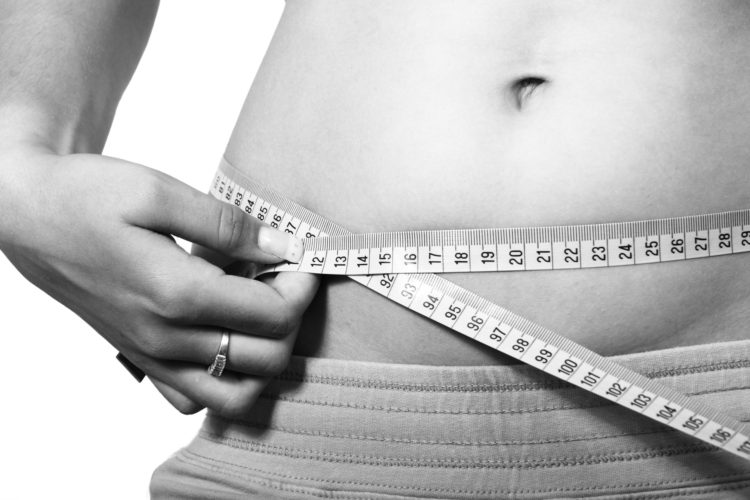If you’ve been paying attention at all to the fitness and nutrition world, you would have come across this new ‘fad’ diet. Much like paleo, the ketogenic diet is steeped in controversy… dietitians seem to hate it, athletes and bloggers seem to love it…
And with so many books, blogs and articles to read through it can be so tough to know what’s healthy and what’s not.
I wrote this blog to simply, succinctly answer two questions:
1. What the heck is the ketogenic diet?
And…
2. How is the ketogenic diet different than Eat By Design?
The ketogenic diet is, by definition, not a fad diet – its use extends back as far as the Greeks.
In more modern history, some traditional tribal cultures, such as the Inuits in Alaska have been known to live on a ketogenic diet without knowing or meaning to. And the use of this diet has also been used as a formal treatment for epilepsy, beginning in the 20th century.
So while there may be some hype around it in recent years, it is certainly not a new or recent invention.
What the heck is the ketogenic diet?
Imagine for a second that your car engine could burn both gas and diesel… If you’re a penny-pincher like me, you’d probably want your car to burn diesel most of the time (it’s much more efficient) and save your gas for the passing lanes.
Well it turns out your body has essentially this same makeup although the ‘diesel’ side of things is largely dormant when we eat a standard, high carbohydrate diet.
The ketogenic diet activates or amplifies your diesel engine which allows you to generate energy from fat (for example your stored fat) much more efficiently.
To understand this, here’s a quick metabolism review:
First of all, ‘metabolism’ just means the processes your body uses to convert food into energy.
Your body has different metabolic pathways to generate energy for the brain and the body. When you eat food, it is broken down by your digestive system into 3 essential parts:
- Macronutrients
- Micronutrients
- Everything else/waste
The micronutrients enter the bloodstream and become tissue, enzymes, hormones and other substances in the body and waste gets passed through the digestive track and gets made into… well… you know what.
Macronutrients (carbohydrates, proteins and fats) serve two purposes – to become the building blocks for our cells (you literally are what you eat) and fuel for the furnace of your body. Like coal in a furnace or wood on a campfire, your body burns macronutrients to generate energy.
Normally, our diets contain a mix of carbohydrates, protein and fat. Protein isn’t great for energy creation, so we only really use those if we have to. That leaves carbs and fats.
Carbohydrates are usually in ample supply, and our body preferentially breaks them down to create glucose.
An over-abundance of glucose in our bloodstream, however, creates a whole host of problems, from systemic inflammation to pancreatic and liver disease.
There is also a back-up generator, which switches on when carbohydrates are hard to come by.
This system breaks down fats to form energy in a different way. The ketogenic diet utilizes this metabolic pathway to produce energy for the brain and the body.
The ketogenic diet uses high dietary fat intake to feed this backup generator and produce ketone bodies – hence KETOgenic diet (ketone making). These ketone bodies can be used by both the brain and the body to produce energy.
This system is incredibly intelligent as an energy production system when you consider the survival pressures that were on the human race once upon a time – cold, long winters where food was much harder to come by and was therefore carefully rationed, followed by spring and summer season where food sources were much more abundant.
In times when people were starving or consuming way less calories, the production of ketones from their own fat cells helped them survive famine.
There are two ways to switch your body from burning carbohydrates to burning fats:
1. Fast – for healthy individuals, a short term of little or no calorie intake will necessitate that your back up generator kick in.
2. Increase the amount of fat you eat and significantly limit the amount of carbohydrates you consume.
This kinda sounds like it fits into Eat by Design – after all, Step 4 of Eat By Design is ‘Increase Quality Fat Intake’… And there are definitely benefits to running off fats as a primary fuel source:
- More even insulin response
- More appropriate hunger and satiety signals and
- Weight loss, just to name a few…
However, while the ketogenic diet is a very carbohydrate restricted diet (which can have some serious downsides if you’re not careful), Eat By Design, by contrast, is a carbohydrate appropriate diet.
On a ketogenic diet, your carbohydrate intake is limited to about 5%-10% of your total calories for the day. Protein makes up another 10%-20% and the remaining 70% of your caloric intake should be fats.
For most people this is really tough to achieve and even harder to maintain. Not just because the process of transitioning into ‘fat burning’ can sometimes be unpleasant, but because depleting your carbohydrate stores entirely may cause a drop in mental and physical performance.
While the ketogenic diet was once recommended as a cure for epilepsy, and now is very frequently recommended for certain weight loss and body composition goals, Eat by Design has always had one objective – to meet the nutritional requirements to get and remain healthy.
Eat by design is a strategy to fulfill our requirements for fuel, based on 3 main criteria:
- Foods that we as humans are best adapted to;
- Foods with the highest nutrient density and;
- Foods with the least amount of toxicity.
According to Eat by Design, the level of carbohydrate an individual should consume is determined based on an individuals metabolism and energy expenditure. Generally speaking, someone who exercises more will function and perform better consuming more carbohydrates and vice versa.
Following these key criteria makes it much easier to identify foods that ultimately will hep you thrive – not just survive.
Now What?
This week, take stock of how much you’re eating, and more specifically the ratio of carbohydrates, protein and fat. You don’t have to bust out your calculator (although you can if you want,) just an estimate will do. If you’re like most people, it’s probably skewed on the high carb, low fat side.
Next, over the same period write down how you feel and perform and make note of any obvious connections.
Comment below to let us know what you discover!
Are you looking for ‘biggest-bang-for-your-buck” strategies to get your diet on track once and for all?
Click below to download the Eat By Design Quick Start Guide.
 Dr. David Hawkes is a wellness expert and martial arts enthusiast. Born and raised in Perth, Western Australia, Dr Hawkes’ passion for health and wellness has led him here to Kanata, literally halfway around the world. After graduating from Murdoch University, Dr. Hawkes ran a successful practice in Perth’s western suburbs before moving to Ottawa. Dr. Hawkes has a special interest in family wellness, as well as Peak Performance. He is passionate about helping individuals and families lead their extraordinary lives.
Dr. David Hawkes is a wellness expert and martial arts enthusiast. Born and raised in Perth, Western Australia, Dr Hawkes’ passion for health and wellness has led him here to Kanata, literally halfway around the world. After graduating from Murdoch University, Dr. Hawkes ran a successful practice in Perth’s western suburbs before moving to Ottawa. Dr. Hawkes has a special interest in family wellness, as well as Peak Performance. He is passionate about helping individuals and families lead their extraordinary lives.
